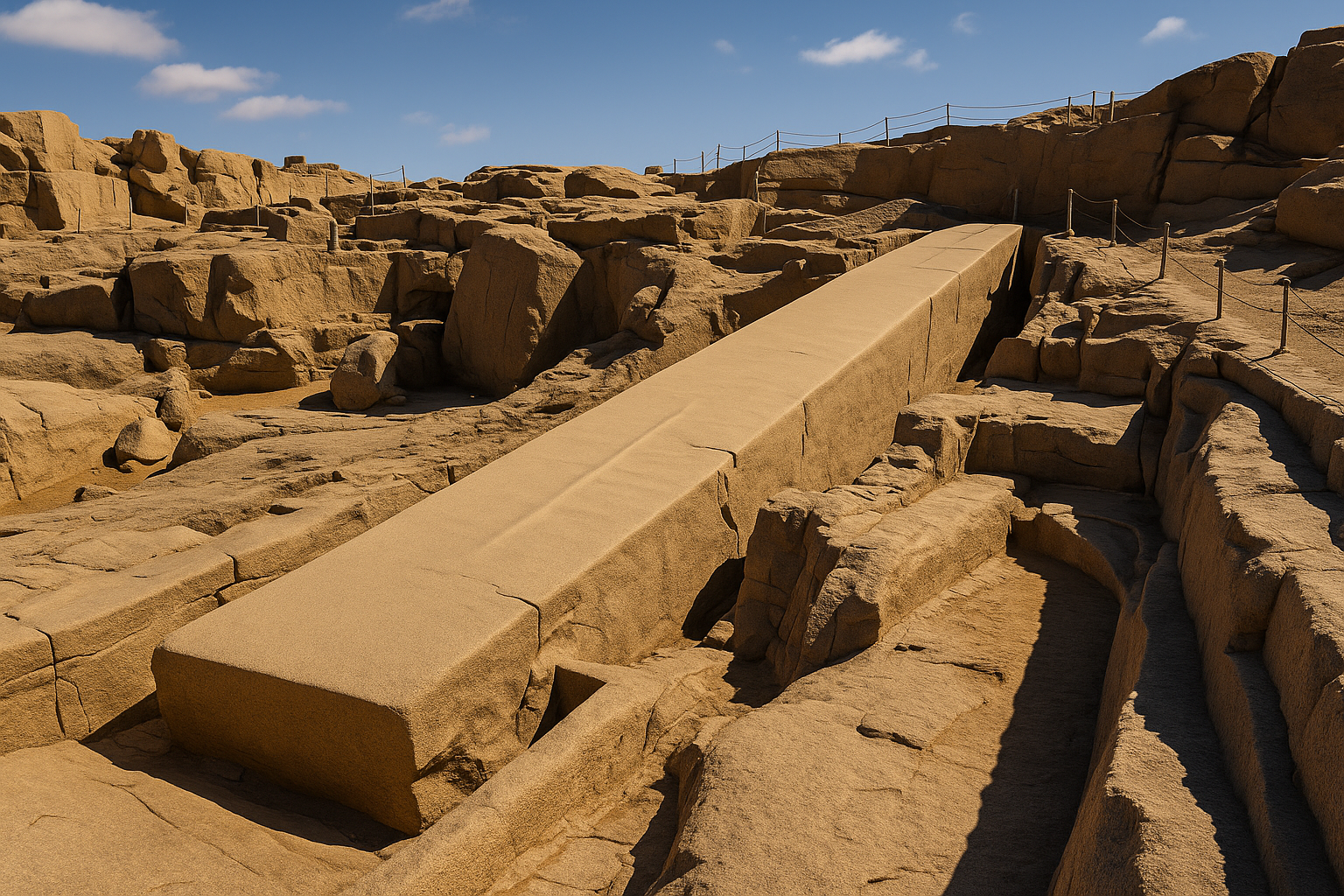Discover the Unfinished Obelisk in Aswan, Egypt’s largest known ancient obelisk. Learn its history, construction secrets, and why it remains incomplete after thousands of years.


Post Introduction
Discover the Unfinished Obelisk in Aswan, Egypt’s largest known ancient obelisk. Learn its history, construction secrets, and why it remains incomplete after thousands of years.
Post Content
In the heart of Aswan’s ancient granite quarries lies a colossal monument that was destined to be the largest obelisk ever erected in ancient Egypt. Known today as the Unfinished Obelisk, this massive stone lies exactly where artisans left it more than 3,000 years ago. Measuring an estimated 42 meters (137 feet) and weighing around 1,200 tons, it offers a rare, frozen-in-time look into the craft, ambition, and challenges of ancient stone carving.
The Unfinished Obelisk isn’t just a tourist stop—it’s an open-air textbook of ancient engineering. It reveals how Egypt’s master stonemasons worked with simple copper tools to shape monumental granite, long before the invention of modern machinery. For historians and travelers alike, it’s a tangible link to the days when pharaohs sought to leave their mark in stone, aiming for feats of glory that would last for eternity.
🔹 You can have some informathion About : aswan to luxor cruise 3 nights
Archaeologists believe the obelisk was commissioned during the reign of Queen Hatshepsut (1508–1458 BCE), one of ancient Egypt’s most powerful and ambitious rulers. Intended for the Karnak Temple complex, it would have surpassed all other obelisks in size and grandeur.
However, tragedy struck during its creation. A deep crack developed in the granite during the carving process, rendering the monolith unusable. The project was abandoned on the spot, leaving the obelisk partially attached to the bedrock, exactly as the workers had left it thousands of years ago.
The Unfinished Obelisk provides a unique insight into the ancient Egyptian stone-working process. Workers used dolerite pounding stones to chip away at the granite, creating deep channels around the monolith to separate it from the bedrock.
The fatal flaw—a long crack in the stone—made the structure unsafe for erection. Given the obelisk’s intended height and weight, even a minor fracture could have caused catastrophic failure during transport or installation. The discovery of the crack meant months, perhaps years, of labor were lost, but starting over on a new block was the only option.
🔹 You can have some informathion About : Elephantine Island
The Unfinished Obelisk is located in the Northern Quarry of Aswan, a short drive from the city center and easily accessible by taxi, tour bus, or Nile cruise excursions.
The site features walking paths and viewing platforms that allow you to get close to the granite surface and see the tool marks left by workers over three millennia ago. Information boards explain the carving techniques and the obelisk’s intended purpose.
The site is outdoors and exposed to the sun, so early morning or late afternoon visits are recommended to avoid Aswan’s midday heat.
Although it never stood in glory, the Unfinished Obelisk remains a monument to human ambition and ancient craftsmanship. It stands as a testament to the trial-and-error process behind Egypt’s architectural wonders, showing that even the greatest civilizations faced setbacks.
For Egyptologists, it’s an invaluable resource—providing direct evidence of quarrying methods, tool usage, and the monumental scale of royal projects. For travelers, it’s a humbling reminder that history isn’t just about the monuments that were completed, but also about the dreams that were left behind.
Q1: How big is the Unfinished Obelisk?
It measures about 42 meters (137 feet) in length and would have weighed approximately 1,200 tons if completed.
Q2: Who ordered the Unfinished Obelisk?
It is widely believed to have been commissioned by Queen Hatshepsut during the 18th Dynasty.
Q3: Why wasn’t the obelisk completed?
A large crack appeared in the granite during carving, making it structurally unsafe.
Q4: Can visitors walk onto the obelisk?
No, but visitors can view it closely from designated paths and platforms.
Q5: What makes the Unfinished Obelisk important for historians?
It offers direct archaeological evidence of ancient quarrying and construction methods.